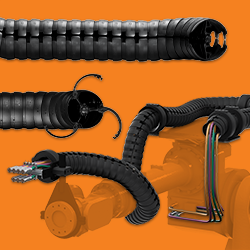How Remote Sensing Technology is shaping up the nature of human survival?
India has just recently launched its heaviest rocket to go in the outer space orbit. Not only did ISRO managed send such a huge machine in the space successfully, but it is also functioning as expected.
India has just recently launched its heaviest rocket to go in the outer space orbit. Not only did ISRO managed send such a huge machine in the space successfully, but it is also functioning as expected. Aside from the advanced engineering skills required for sending a rocket in the space, it is also required that we understand the data we get through remote sensors. The academic discipline that teaches about those aspects is called as ‘Geoinformatics. Lately, MSC in remote sensing is an academic program which is beginning to gain a credible traction in the education domain. This article throws light on the several applications of remote sensors.
Meteorology- Perhaps the most primitive & broad range use of remote sensors is in the field of meteorology. It includes observing & studying of atmospheric temperature, pressure, water vapor, and wind velocity. Remote sensors are being used to analyze the meteorologic shifts on earth since a long time.
Oceanography: Its a well-known fact that a massive percentage of earth is covered with water, about 71%. Since our habitat is mostly occupied with water, it is very crucial that we have proper tools to study it. Remote sensors are used for measuring sea surface temperature, mapping ocean currents, and several other factors.
Geology- Apart from the water, another entity that has spread across the globe is rock. Earths crust and mantle are predominantly formed of rock. In fact the crust averages about 35 kilometers in thickness across the seven continents. Considering such an omnipresence of rocks, it is important that we understand its nature & factors affecting it. Remote sensors plat a pivotal role in Identification of rock type, mapping faults and structure.
Topography and cartography - Earth is made up of a number of terrains, regions, climates, so forth & so on. Apart from the natural variety, external aspects like natural calamities, human intervention, etc. also impact the topographic nature. Remote sensors are improving the process of marking up the digital elevation models of earth to offer a precision.
Agriculture & Vegetation: The field of agriculture & vegetation has yielded a number of benefits from remote sensors. RS is used in monitoring the biomass of land vegetation Forest, health of crops, mapping soil moisture Botany & forecasting crop yields. Starting from crop type identification & mapping to crop condition assessment, remote sensing technology plays a vital role in it.
Hydrology- Even though earths 70% of the surface is covered with water, the percentage of Fresh water or as you can call it drinkable water is only 2.5%. Thus, assessing water resources from snow, rainfall and underground aquifers is necessary for the continuation of life, in which remote sensing is very crucial.
In last decade, especially since India started undergoing a technological evolution, the field of Geoinformatics has gained a significant traction. To cater to such a demand, colleges like Symbiosis Institute of Geoinformatics (SIG) provide top-notch training in India.
Featured Product

